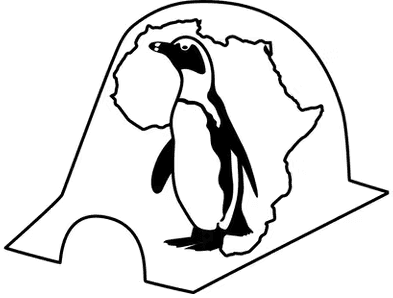Four Species
At one time millions of years ago as many as four species of penguins called Africa home, now a single species is barely hanging on. These historical penguins ranged in size from a minuscule species barely measuring a foot in height up to an impressive species reaching approximately three feet in height. This compares in size to the little blue penguins and massive emperor penguins still living today.
The loss of species diversity in the historical record is unrelated to human activities, likely being caused by rising and falling sea levels having detrimental effects on the nesting grounds. With the heavy reliance of penguin species on offshore islands providing safe breeding sites a change in sea level can either open the colony up to land-based predators or entirely swamp the colony. While humans may not have been the cause for the extinction of the historical species, we are the direct cause for the collapse of African penguin populations.

Fossil Records
African penguins as a species are only thought to have come to Africa within the last 400,000 years based on fossil records, relatively young in comparison to penguins inhabiting the remainder of the Southern Hemisphere. During that time African penguins were the only species dotting the coastlines with the remaining species of the continent having gone extinct long previous.
The majority of penguin species of the world colonize continental margins or across seaways that offer them some degree of protection from human related activities. Unfortunately, endemic to areas situated close to human populated areas this is not the case with African penguins. For all but the last 200 years of their existence African penguins thrived in their colonies. The change has been dramatic once humans found themselves sailing to the offshore islands that the birds had called home.

Drastic Impact
Guano harvesting, poaching of birds for food and for use as fuel in ship boilers, egg poaching, and over-fishing of their preferred prey items have had a drastic impact on the species population in the last century. Compounding on this, the global climate crisis and introduction of human activities into their breeding colonies have further decimated the population counts.
The practices of egg poaching and guano harvesting ended decades ago, but that doesn't negate the immense damage that was done during the decades of these actions. Current threats are magnified due to the condensing of the breeding ranges. Commercial fish trawlers and poaching stresses the already depleted anchovy and sardine colonies. Oil spills affect a larger percentage of the remaining population and have long-term impacts on reproductive success. These challenges are magnified by the change in ocean temperatures and current that have shifted food resources further from the breeding colonies.
From a population exceeding four million birds in the 1800's there has been a decrease of 99% at the current time. Estimates in 2022 are that significantly less than 20,000 breeding pairs of African penguins are remaining in the wild spread amongst colonies in South Africa and Namibia. Without focused investment in the protection of the resources needed for the remaining population to survive the future of the African penguin could be doomed to the same fate of the four previous species that called Africa home.





